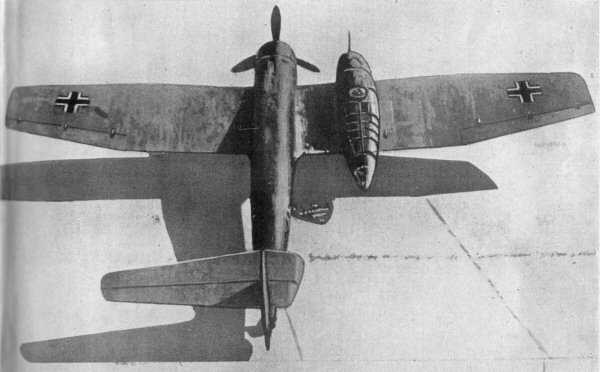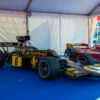Some aircraft seem to defy all logic, pushing the boundaries of what we imagine is possible in aviation design. From pancake-shaped planes to bulbous cargo carriers, these bizarre machines weren’t just fantasies on paper; they took to the skies, challenging engineers to think outside traditional forms and functionalities. These unique designs served a specific purpose, whether transporting oversized cargo, performing reconnaissance, or testing hybrid technologies. Despite their unconventional appearances, these aircraft demonstrated that practicality can sometimes look a little strange when it comes to flight.
These bizarre designs were often the result of creative solutions to complex problems, leading to some of the most unexpected shapes in aviation history. Some were built to operate in unusual environments, like water or tight spaces, while others tested novel concepts such as parasite fighters or flying cars. Although many of these oddities remained prototypes or limited-use models, they left a lasting impact on aircraft innovation and inspired new directions in design. Here’s a look at some of the strangest aircraft that made it off the ground and, in some cases, even into aviation lore.
Contents
Vought V-173

The Vought V-173, nicknamed the “Flying Pancake,” featured an almost completely circular wing that spanned 23 feet, allowing it to generate incredible lift. This flat, disk-like design was part of a project to create a more versatile aircraft that could operate from short, improvised runways. Unlike traditional aircraft, the V-173 had no conventional fuselage and featured twin engines embedded in its wings, powering large propellers. Its unusual shape allowed for low-speed flight, perfect for naval operations. Although it appeared unwieldy, the V-173 could safely maneuver through the skies and even proved remarkably stable during test flights.
NASA’s Super Guppy

NASA’s Super Guppy is one of the most recognizable “bulging” aircraft in aviation history, designed to transport oversized cargo that other planes simply couldn’t accommodate. This aircraft boasts a unique balloon-like fuselage, allowing it to carry massive payloads, including parts of spacecraft and other large components. Despite its unconventional shape, the Super Guppy’s design minimizes drag at lower speeds, making it ideal for cargo hauls. Its huge, cavernous cargo hold can open entirely, facilitating the loading of bulky items. Although it looks ungainly, the Super Guppy’s strength lies in its utility, proving that functionality can sometimes defy traditional aerodynamics.
Sikorsky S-72

The Sikorsky S-72 was a hybrid design combining helicopter and fixed-wing elements, equipped with both a rotor and wings to enable vertical and high-speed flight. Originally developed as a research aircraft, it could switch between helicopter and airplane modes. This hybridization allowed it to perform vertical takeoffs and landings like a helicopter and fly at faster speeds once in the air, giving it an unprecedented level of versatility. Although it faced limitations and challenges in performance, the S-72’s innovative approach helped pave the way for future developments in tiltrotor and hybrid aircraft technology.
Curtiss-Wright VZ-7

The Curtiss-Wright VZ-7, also known as the “Flying Jeep,” was a quad-rotor vertical takeoff and landing (VTOL) craft developed for the U.S. Army. This small, boxy aircraft featured four rotors mounted around an open frame, allowing it to hover and perform short takeoffs and landings. The VZ-7’s appearance was highly unconventional, as it looked more like a piece of industrial equipment than an aircraft. However, its ability to perform low-altitude flights and land in tight spaces provided a glimpse into future VTOL possibilities. While the Army ultimately shelved the project, the VZ-7 proved that unconventional VTOL designs could function effectively.
Boeing 377 Stratocruiser

The Boeing 377 Stratocruiser was an odd-looking double-decker passenger aircraft with a bulbous fuselage that maximized cabin space and passenger comfort. Derived from the military C-97, this commercial airliner featured a distinctive “humpbacked” appearance and luxurious interior layout, setting it apart from other aircraft of its time. Its unique design allowed for spacious cabins and additional cargo capacity, marking a step forward in luxury air travel. Despite its bulky structure, the Stratocruiser’s advanced pressurization and twin-deck layout made it a highly successful model for long-haul flights, pushing the boundaries of commercial aviation design.
Blohm & Voss BV 141

The Blohm & Voss BV 141 is one of the most asymmetrical aircraft ever created, designed to maximize visibility for reconnaissance missions. It featured a completely unbalanced layout, with the cockpit positioned off to one side of the main fuselage and the engine on the opposite side. This design allowed the pilot and crew an uninterrupted view below and around the aircraft, which was highly valuable for reconnaissance. Although it looked unstable, the BV 141 was surprisingly agile and capable, proving that unconventional layouts could serve unique operational needs effectively.
Bartini Beriev VVA-14

The Bartini Beriev VVA-14 was an amphibious aircraft developed during the Cold War to counter submarines. Its odd, bulky structure allowed it to operate both in the air and on water, giving it incredible versatility. Designed with a unique hull and inflatable pontoons, the VVA-14 could take off from water and land on rough sea surfaces, enabling it to quickly deploy in ocean-based missions. Its ability to travel over water while remaining close to the surface also made it an early example of a “ground effect” vehicle. Although few units were built, the VVA-14’s capabilities showcased a futuristic approach to maritime defense.
McDonnell XF-85 Goblin

The McDonnell XF-85 Goblin was a tiny, egg-shaped “parasite fighter” designed to fit inside the bomb bay of larger aircraft like the B-36 bomber. Its purpose was to deploy mid-air, protecting larger bombers from enemy fighters without the need for ground-based support. With its compact body and stubbier wings, the XF-85 was built to be maneuverable and able to return to its mothership. Although the program was ultimately canceled due to docking difficulties, the Goblin’s design was groundbreaking in exploring the concept of “parasite” fighters that could extend the range and security of larger aircraft.
Convair Model 118 ConvAirCar

The Convair Model 118 ConvAirCar was a combination of car and plane, attempting to bring the concept of a “flying car” to reality. Designed to be driven on the road and flown in the air, this vehicle featured a detachable airplane module mounted atop a four-wheeled automobile base. It offered a unique dual-mode functionality, allowing users to drive on regular roads or take to the skies as needed. Despite its promising concept, the ConvAirCar struggled with practicality, as its design was too complex for mass production. Nevertheless, it remains a fascinating example of cross-industry innovation in transportation.
Edgley Optica

The Edgley Optica was a light reconnaissance aircraft designed with a bubble-shaped cockpit, providing nearly 360-degree visibility for its occupants. Its appearance resembled that of a helicopter without the rotor, and its unusually large, transparent cockpit offered a panoramic view ideal for observation missions. The Optica’s twin-boom design and large propeller in the rear gave it a unique appearance, and its low-speed flight capability made it well-suited for surveillance. Although it faced limited commercial success, the Optica’s remarkable visibility and unconventional design have continued to inspire specialized aircraft for low-speed reconnaissance.
This article originally appeared on MyCarMakesNoise.
More from MyCarMakesNoise
20 Vehicles Experiencing Major Depreciation Right Now

Some cars experience rapid depreciation, losing their value faster than others. Whether due to market trends, high maintenance costs, or low demand, these vehicles can be poor investments. Read More.
13 of the Rarest BMW Cars to Ever Hit the Road

BMW has long been celebrated for its luxury, performance, and innovative design blend. Over the years, the Bavarian automaker has crafted numerous models that not only pushed the boundaries of automotive engineering but also captured the imaginations of car enthusiasts worldwide. Read More.
20 Car Features Drivers Are Begging Automakers to Remove

Not all car features are welcomed by drivers. Some can be more annoying than useful, adding complexity or distraction. Read More.














